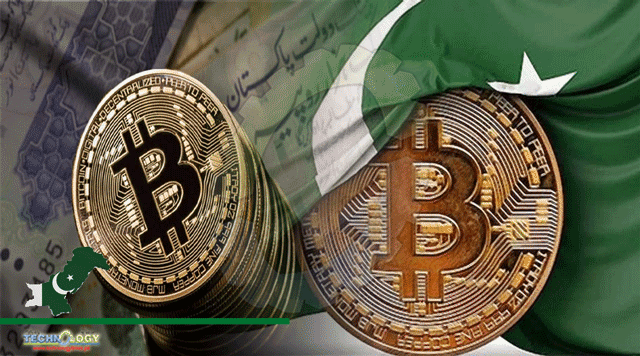The profile of crypto investors points to a higher representation of males and younger generations (Gen Z and Gen Y) in Pakistan’s cryptocurrency market.

A survey by the international crypto exchange firm KuCoin reveals that 33% of Pakistani crypto investors see the instrument as a hedge against the Rupee’s sharp decline seen in recent months, despite claims made on May 17 by Pakistani authorities that they are working to have cryptocurrencies banned in the nation.
The most frequent uses of cryptocurrencies in Pakistan, according to KuCoin’s report “Into the Cryptoverse: Understanding Pakistani Crypto Investors 2023,” are trading, hodling, peer-to-peer money transfers, and purchasing Non-Fungible Tokens (NFTs).
According to research, 35% of Pakistani crypto investors are under the age of 25, and 47% are between the ages of 26 and 39. The survey, which was conducted between May 5 and May 12, 2023, used a sample of 500 adult crypto users from across the nation.
Pakistan comes in at number six overall in Chainalysis’ 2022 Global Crypto Adoption Index. 17 percent of Pakistani internet users ages 18 to 60 who participated in our most recent survey in May 2023 identify as cryptocurrency investors, either currently holding or having recently held the digital currency.
Given that the Pakistani Rupee has lost more than 20% of its value against the US dollar over the past few months, this indicates that more people are becoming aware of and accepting of cryptocurrencies as viable investment options.
The profile of crypto investors points to a higher representation of males and younger generations (Gen Z and Gen Y) in Pakistan’s cryptocurrency market. The fact that 66 percent of respondents identify as men points to a gender gap in the cryptocurrency investment industry.
Gen Y comprises the majority of cryptocurrency investors (47 percent) (aged 26 to 39). With a share of 35%, Gen Z (aged 18 to 25) is the second-largest group.
The majority of Pakistani cryptocurrency investors—66 percent of respondents—have household incomes of less than Rs. 5 million annually. Furthermore, within the last three months, 30% of new investors started making cryptocurrency investments.
This suggests that as the use of cryptocurrencies increases, a sizable proportion of cryptocurrency investors in Pakistan come from families with moderately low to low income levels.
According to the data, a sizeable percentage of respondents across all generations have just recently started using cryptocurrencies, with 30% of those surveyed saying they made their first transaction less than three months ago.
The largest group, Gen Z, has the highest percentage (36%) of people who have just completed their first cryptocurrency transaction.
A sizeable percentage of investors have been active in the cryptocurrency market for a long time. 36 percent of people completed their first transaction a year ago or earlier.
Overall, the data indicates that Pakistan’s crypto investments are mainly in the low to mid ranges. In Pakistan, a sizable portion (40%) of cryptocurrency investors have stakes under Rs. 30,000 (roughly $100). This is especially clear among Gen Z. (48 percent).
While Gen Y investors have made investments above Rs. 300,000 (US$ 1000), Gen X investors have a higher percentage of investors in the middle ranges between Rs. 30,000 and 300,000. This suggests that Gen Y members may be more motivated to invest and have more disposable income.
The data shows a wide range of investment capacities among Pakistani cryptocurrency investors, with 69% investing to participate in the future, 44% investing to build wealth over time, 49% investing to facilitate transactions, and 33% storing asset value against depreciation in cryptocurrency.
While Gen Z investors are more likely to invest in accumulated wealth, Gen X investors are more likely to invest for the long term and value storage.
The study reveals that trading is the most popular use of cryptocurrencies, with 46% of investors in Pakistan who participated in the survey engaging in trading activities.
In contrast, 30% of respondents said they used cryptocurrencies for HODLing (holding onto assets for the long term), earning money through different yield-generating programmes, or taking part in staking.
A growing interest in digital collectibles is indicated by the fact that 29% of respondents said they had used cryptocurrency for peer-to-peer money transfers and 22% had done so for purchasing Non-Fungible Tokens (NFTs).
However, 20% of respondents and 18% of respondents, respectively, reported using cryptocurrency to buy luxuries and everyday items.
The survey also reveals additional instances of value transfers involving cryptocurrencies. 16 percent of respondents said they had used cryptocurrency gift cards or cryptocurrency in general for gifting. 10% of respondents said they had paid or received salaries using cryptocurrency.
The overall results of the survey show a variety of cryptocurrency use cases in Pakistan, which has implications for the evolving role of cryptocurrencies in different facets of financial transactions and investments in the nation.